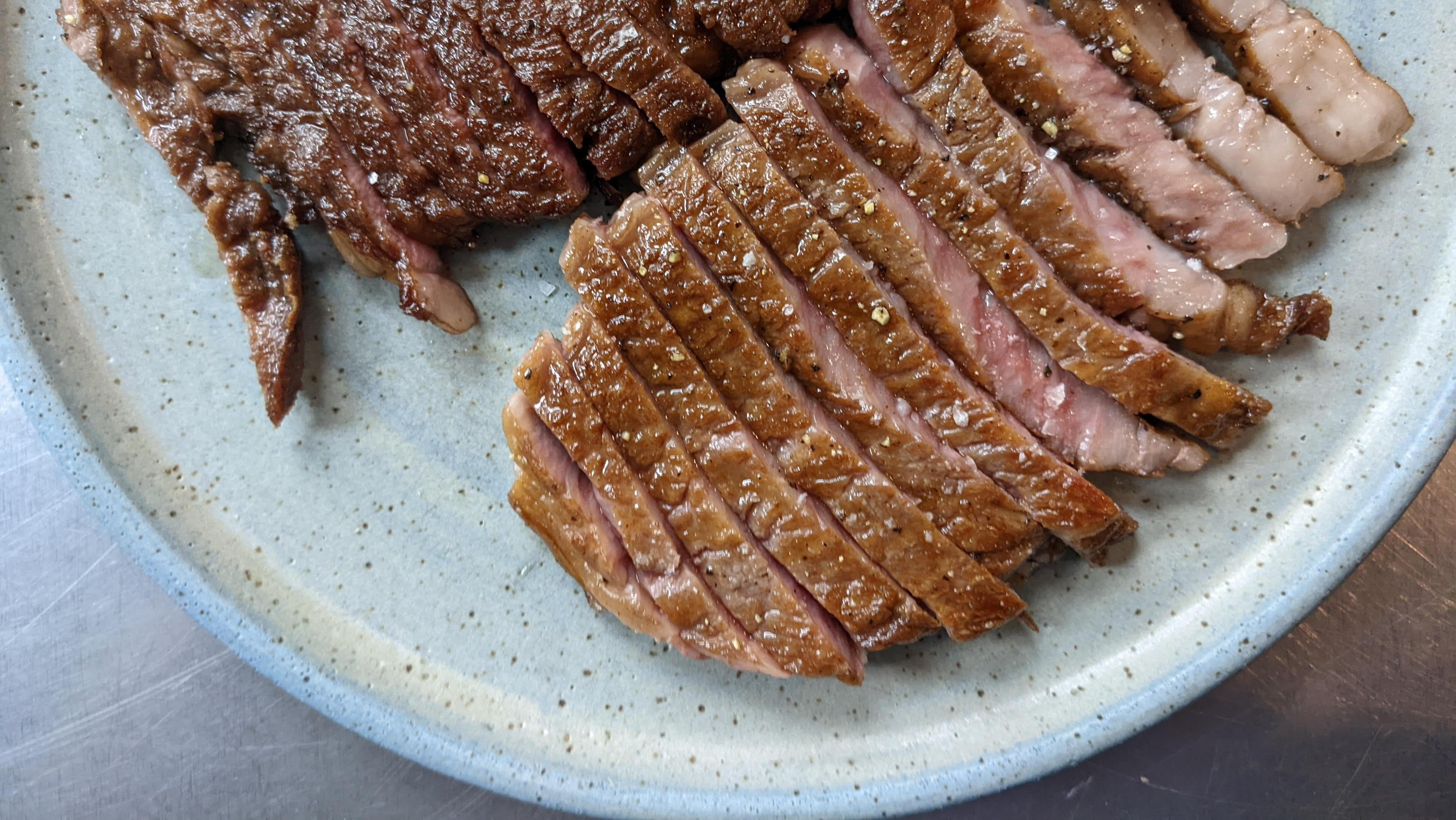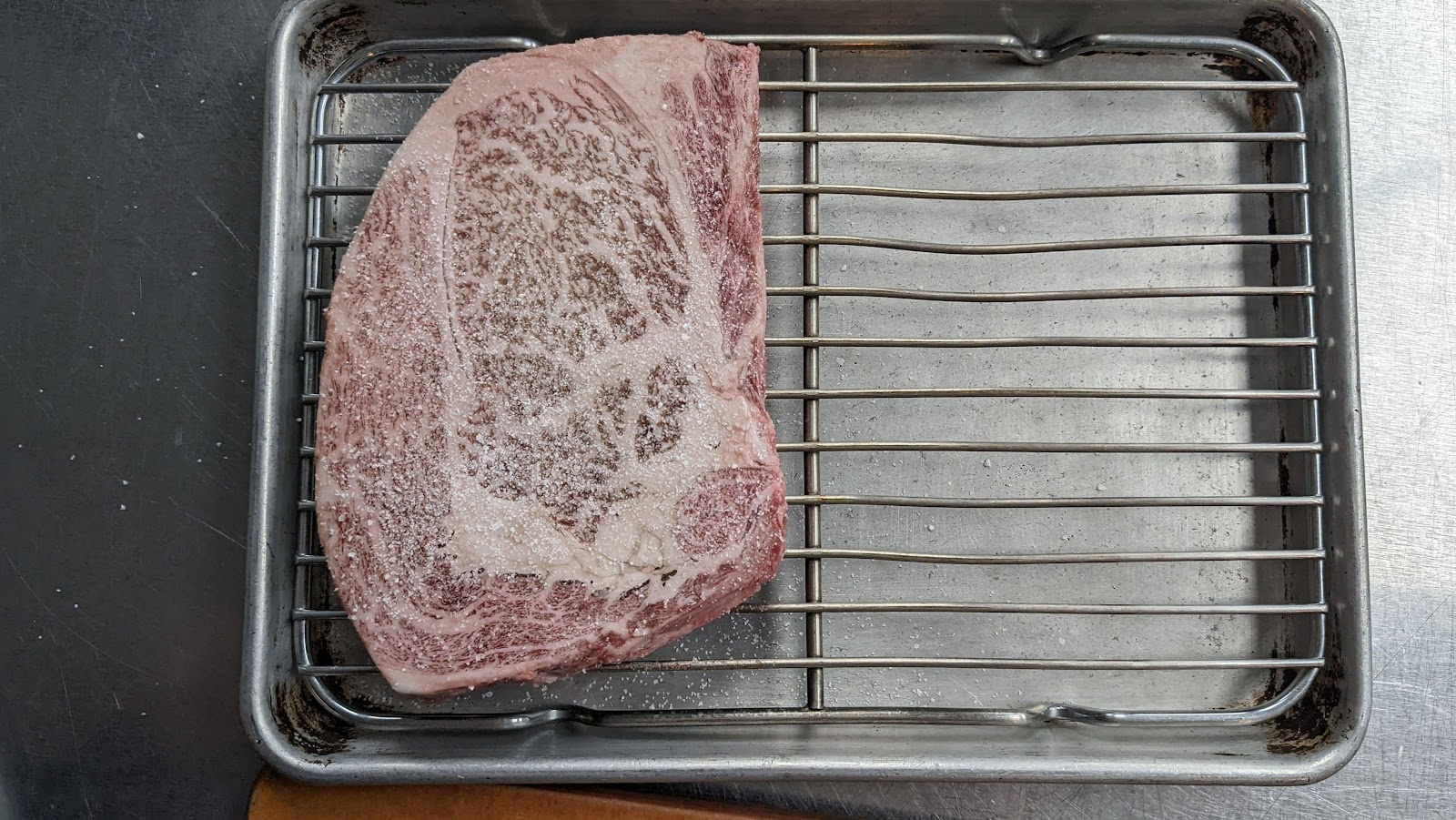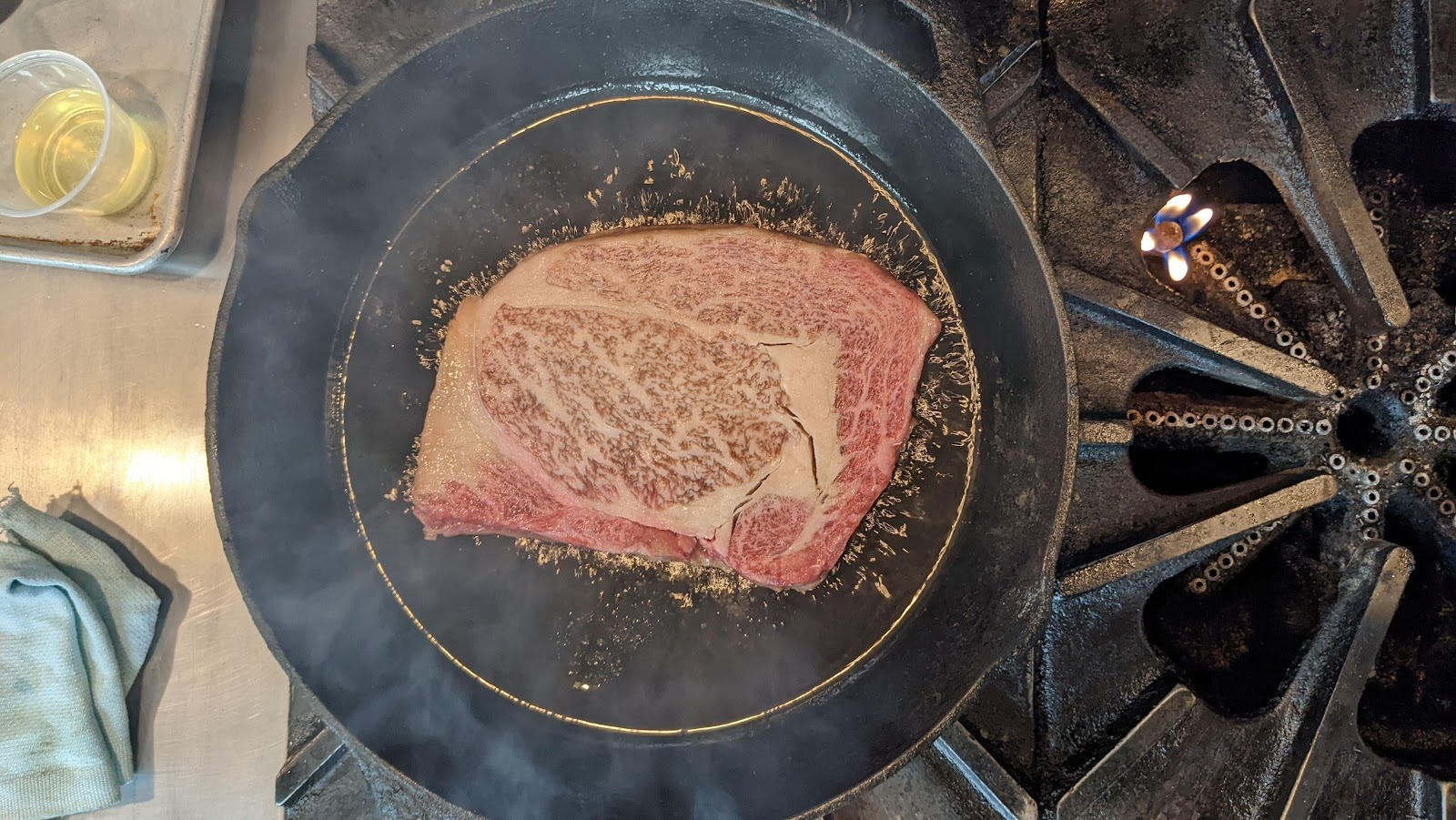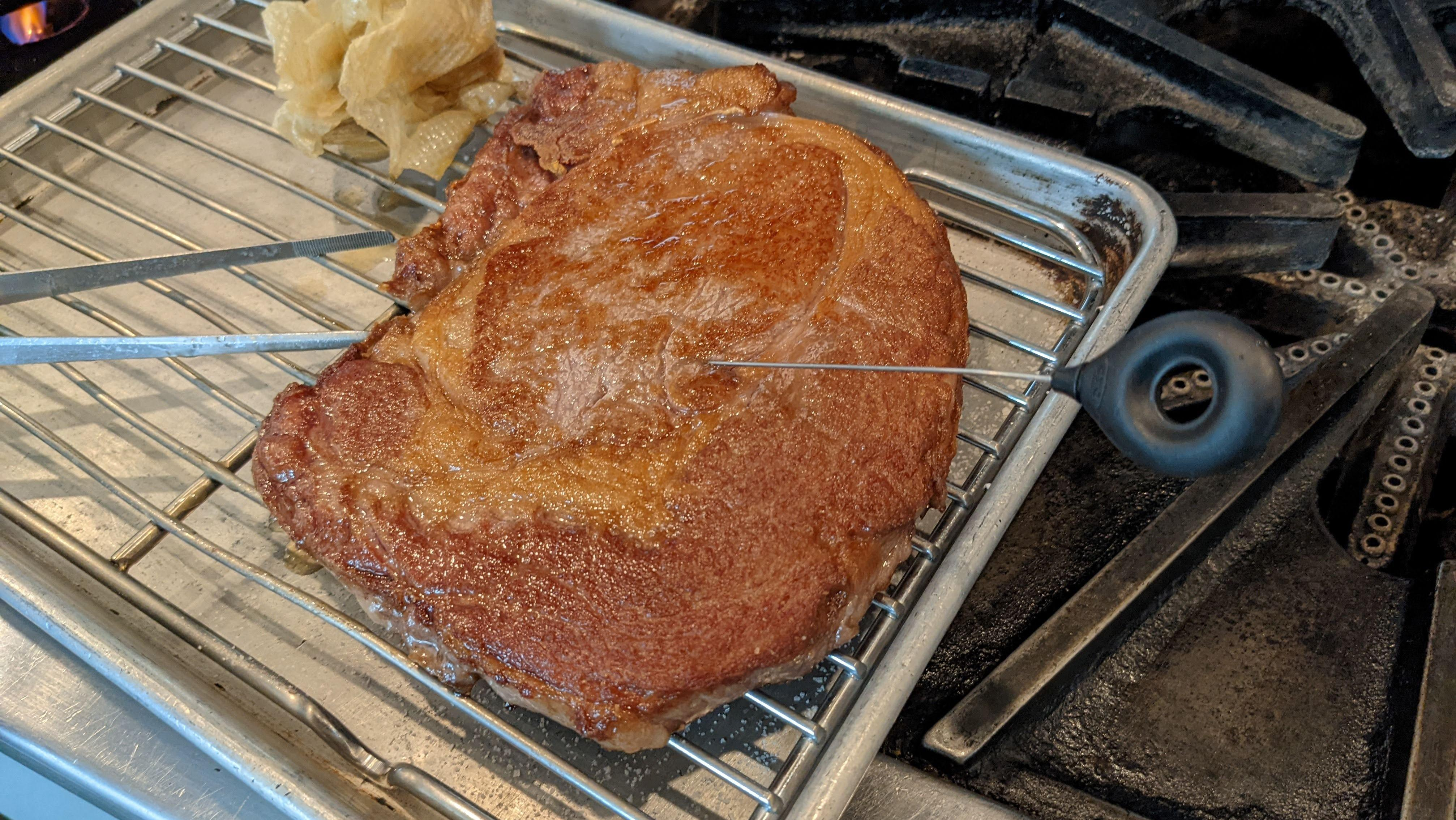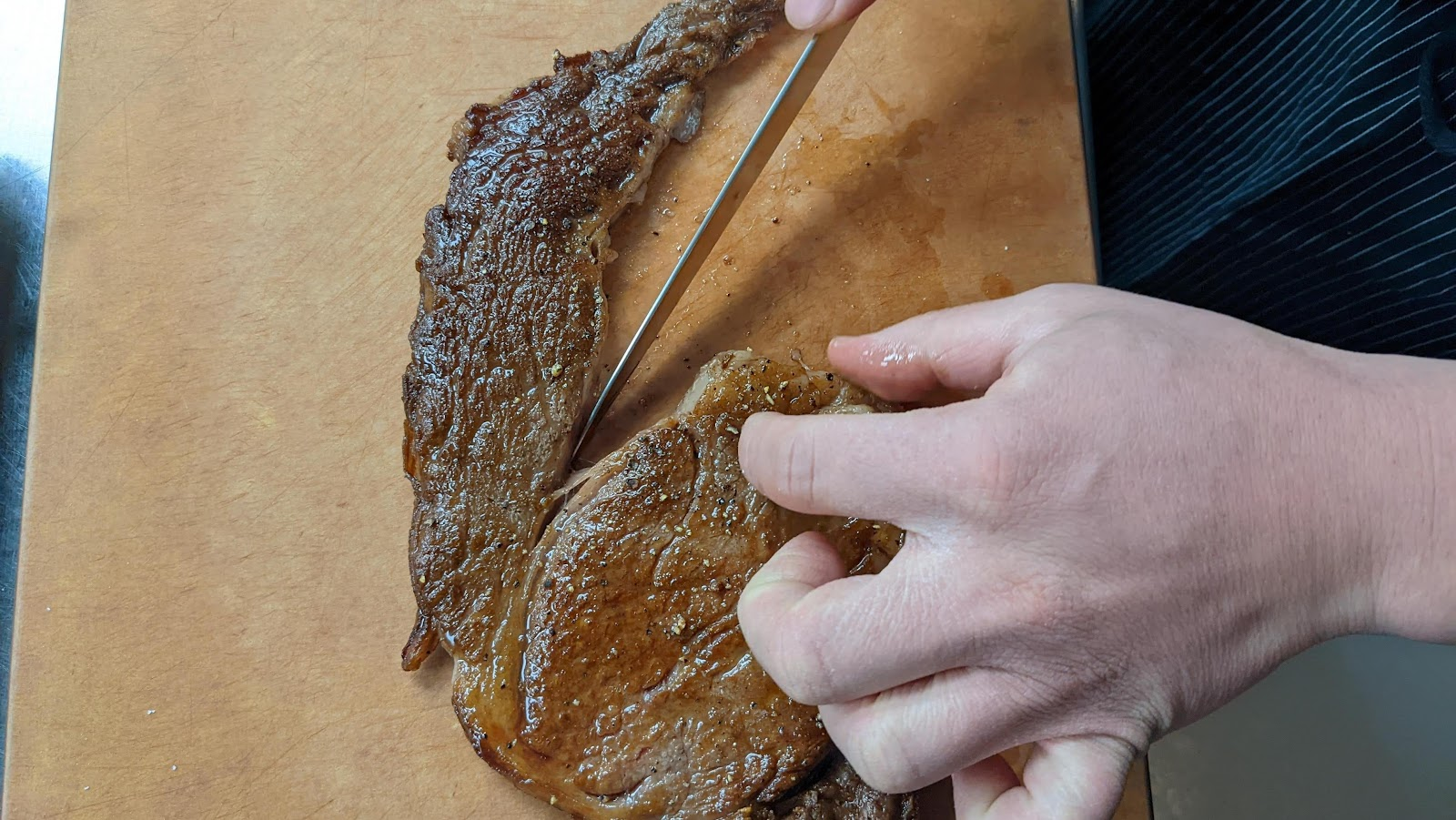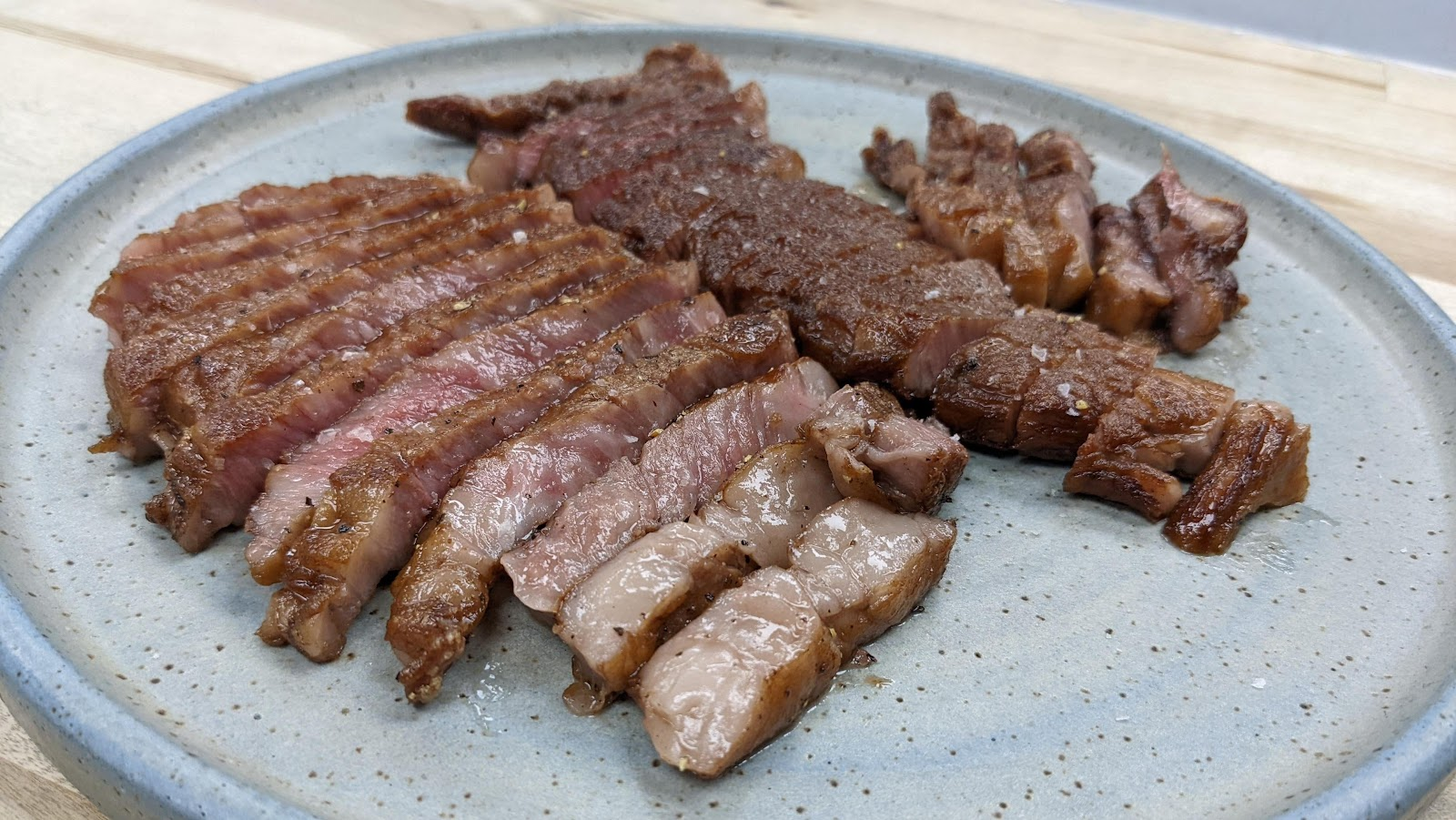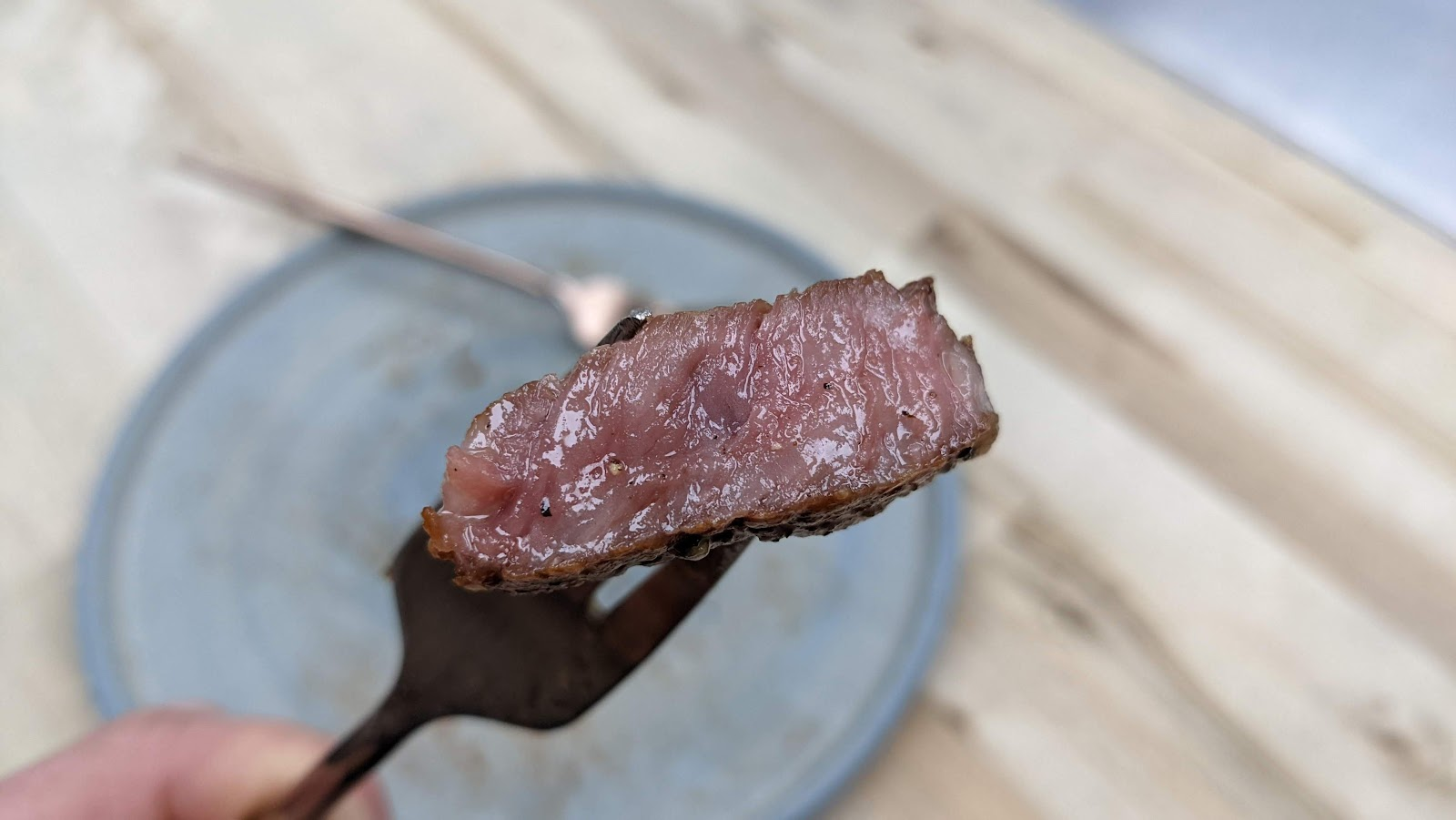How To Cook A Wagyu Steak Without Royally Screwing It Up
Wagyu beef is an expensive treat, but you don’t need to feel intimidated when cooking it.
Wagyu steak is a one-time investment into luxury for many, usually at a high end steakhouse. The price on a piece of meat like that at a restaurant can be eye-wateringly expensive, however. These days, if you're at a butcher that carries specialty meats, or even Costco, you can pick up an ultra-marbled piece of meat to prepare at home, with no fancy equipment necessary. But it can be daunting. How are you supposed to cook Wagyu in your own kitchen without messing it up?
For today's cooking walkthrough, I teamed up with my friend Dave Park, chef and co-owner of fine dining restaurant Jeong, one of my favorite restaurants in Chicago. For the meat, Holy Grail Steak Co. sent me an A5 Wagyu ribeye from Miyazaki prefecture to practice with, and Park taught me how to handle one of these in a home kitchen. It turns out, cooking a Wagyu steak properly is much easier than you might expect.
How to season Wagyu
Frankly, all you need is a good dose of kosher salt. That's it. Park doesn't add any black pepper prior to cooking since there's a good chance it'll burn while it's being seared. Instead, he'll grind some pepper on the finished steak right before it's ready to be served, which preserves the fresh sharp bite of the peppercorn.
The method
Your best bet is the workhorse of your kitchen: the humble cast-iron skillet. Cast iron is good for even searing and heat distribution. No fancy tools necessary. Preheat the cast-iron pan over high heat.
Then be sure to add in a few tablespoons of neutral oil, like vegetable oil. (Butter, while delicious, has solids in it that will burn at high temperatures.) When the oil is shimmering and starting to smoke, you'll be good to go.
An alternate method is sous vide, if you're looking for peace of mind. Park suggests, "If you go about 132 [degrees F] and you cook it for 45 minutes to an hour, that should do the trick." Then you'll want to pat the steak dry briefly on each side, season with salt, and sear in a hot pan until browned on each side.
You might be tempted to grill this steak for charcoal flavor, but be warned: all the fat in a Wagyu steak can and will cause flare-ups, and the last thing you want to do is char the shit out of this $200 piece of meat you just treated yourself with. If you insist upon grilling, then grill at your own risk.
The doneness trick
The best way to see if your steak is done cooking is with an instant-read meat thermometer. But Park taught me an interesting little trick to check if your steak is done. If you don't have a thermometer, you can take a cake tester and poke the steak with it, roughly aiming for the center. Leave it there for about 10-15 seconds, and when you pull it out, place the tester just under your bottom lip (or the inside of your wrist) to feel how warm it is. You're looking for something warm to the touch, but not scalding hot.
After searing the steak on both sides, Park pulled the steak out while he prepared some brown butter in the same cast-iron skillet to finish the steak with. He showed me the cake testing trick—though the steak looked finished, the tester came out ice cold.
After creating the brown butter, he put the steak back in the pan and basted it for about a minute on each side. He grabbed another cake tester and we repeated the temperature check, and this time, the tester came out perfectly warm. Asked where he learned this technique, Park said, "It's just something I picked up working in fine dining restaurants."
(The brown butter step is optional; it just adds an extra level of nutty flavor without too much extra work. The butter can be seasoned with herbs, but in the case of Wagyu, I say skip them since you want the flavor of the meat.)
The slice
This only applies to ribeyes, like the one pictured, but Park likes to remove the cap, which is the thin strip curled around the center of the steak, and slice that separately from the eye, which is the round portion in the middle.
The cap is more tender than the eye, and is a favorite among steak enthusiasts. I've seen it sold as its own steak on occasion, called either the ribeye cap, deckle, or the spinalis. I highly recommend you do this next time you eat or prepare a ribeye at home. There's a unique difference in textures between the two sections, and what's awesome is that they both come in the same cut of steak. Always cut against the grain, which will offer an even more tender bite (though with Wagyu, it's quite forgiving).
How to serve Wagyu
I asked Park if any condiments should be served with Wagyu. "I feel like generally if you're going to eat this, you want it as pure as possible because you're spending a crapload of money," he said.
But if a sauce is important to you, you can make or buy a ponzu sauce (which is a Japanese citrus dipping sauce), use a good soy sauce, or even make a chili pepper type of dip. If you're planning on doing so, just season the steak with a little less salt.
Should it be served with any sides? "You'll want to have any kind of acid just to cut through," Park said. Imagine something sharp like a bitter green salad tossed in a vinaigrette, or a mild white kimchi on the side, and you're good to go.
How Wagyu tastes
Once everything was sliced and ready to go, Chef Park cracked some fresh black pepper coarsely on top. That's all. We took bites of each portion, and I have to say, there's nothing quite like your first bite of A5 wagyu beef. When people describe it as meltingly tender, it really does melt away in your mouth with an extremely light touch. My fiancée, who came along for the taste test, likened it to a "meat cloud."
"It's like a marshmallow," Park says. "I always think of it like when you're eating prime rib, and you get that fat cap right around the rib, that little fatty part— that's literally how this entire thing feels."
If you don't like fatty portions of meat, like soft pork belly, then this is not the indulgence for you, since practically the entire steak is comprised of fat. A few ounces per person should do the trick, and though that sounds like a paltry serving, it's more than enough to give you the full experience. I say this as someone who treasures a meal of big meaty steaks, too. The fat content is so luxurious and indulgent that you'll understand what I mean after a few slices.
I've never had beef that tastes quite like it. In my estimation, A5 Wagyu has sort of a rich chestnut-like flavor. It's a little sweet, slightly funky, and different enough from previous beef I've eaten to stand uniquely on its own. Though I wondered if it would be boring without an extra layer of seasoning like a sauce, it was absolutely delicious, and frankly, it doesn't need any extra ribbons or glitter.
Wagyu is definitely worth trying once, if you ever feel the need to splurge on something. But now that you know how to cook it on your own, there's no need to worry about getting all dressed up for a trip out. You can be your own high-end chef.
